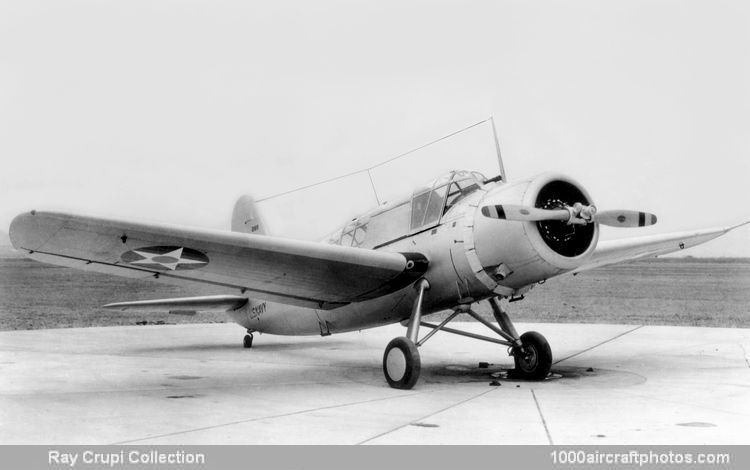10/31/2010. Remarks by Johan Visschedijk: "Of the several observation and scouting aeroplanes available to the Navy when the US entered WW II, the VS-310 Kingfisher was to prove the most useful and the most used. Incorporating some revolutionary structural techniques including spot welding, the Kingfisher was based upon the Vought company's considerable experience of observation aircraft and was designed to replace earlier Vought biplanes in a similar role. Layout of the fuselage was similar to that employed in the biplane scouts, as also was the use of a large single float plus under-wing stabilizing floats. Alternatively, a conventional tail wheel landing gear could be fitted.
A contract to build a single prototype XOS2U-1 was placed by the Navy on March 22, 1937, and this duly appeared in 1938 with a 450 hp Pratt & Whitney R-985-4 engine, making its first flight on July 20. Some small changes in the float attachments and an R-985-48 engine distinguished the production model OS2U-1. The first of 54 examples reached the Fleet in August 1940, and six had been assigned to the Pearl Harbor Battle Force before the end of the year.
Small changes of equipment and an R-985-50 engine were introduced in the OS2U-2, 158 examples of which were delivered in 1940-1941. Many of these early Kingfishers were attached to Pensacola NAS but 53 OS2U-2s were assigned to equip Inshore Patrol squadrons based at Jacksonville NAS. Nine more Inshore Patrol squadrons newly formed in 1942 received exclusively OS2N-1 Kingfishers, these being versions of the OS2U-3 built by the Naval Aircraft Factory.
The OS2U-3 itself differed from earlier models in having extra fuel tanks in the wings and better armor protection for the pilot and observer. Starting in 1941, Vought delivered 1,006 OS2U-3s before production ended in 1942. Armament consisted of one fixed forward-firing and one flexibly-mounted rear 0.30 in (7.62 mm) machine guns."
